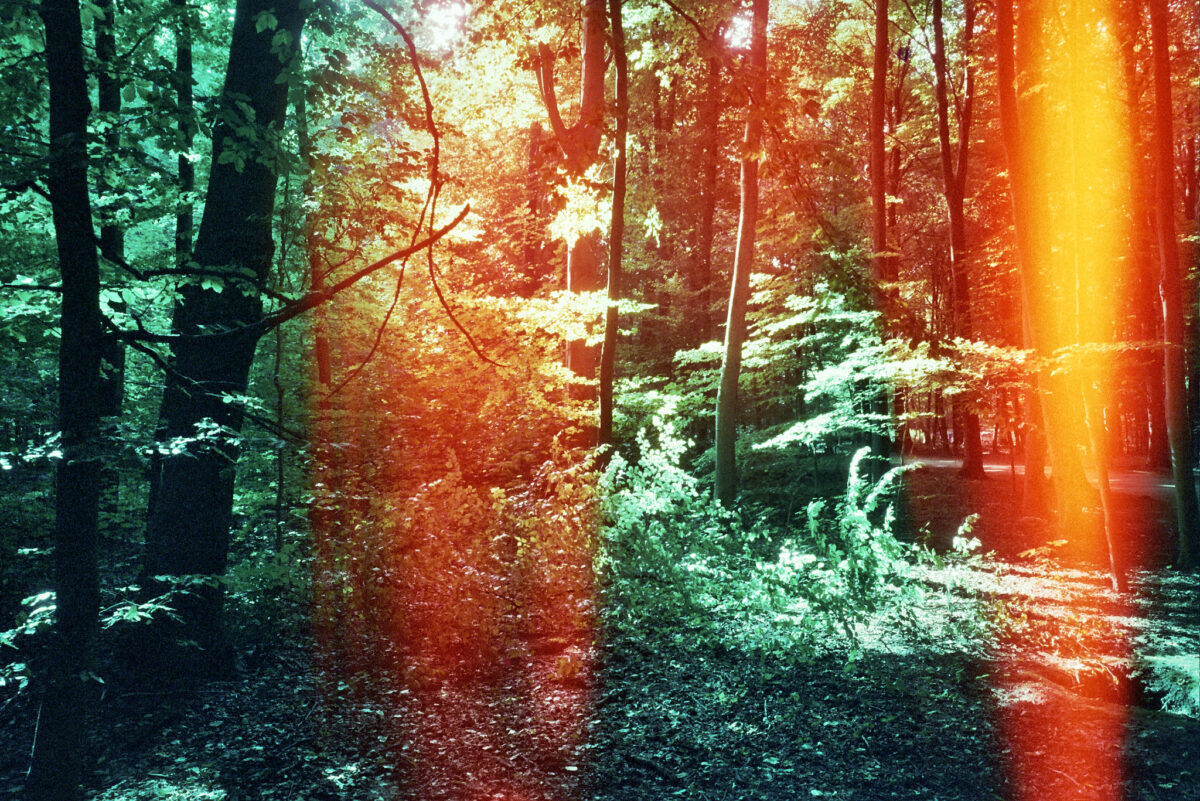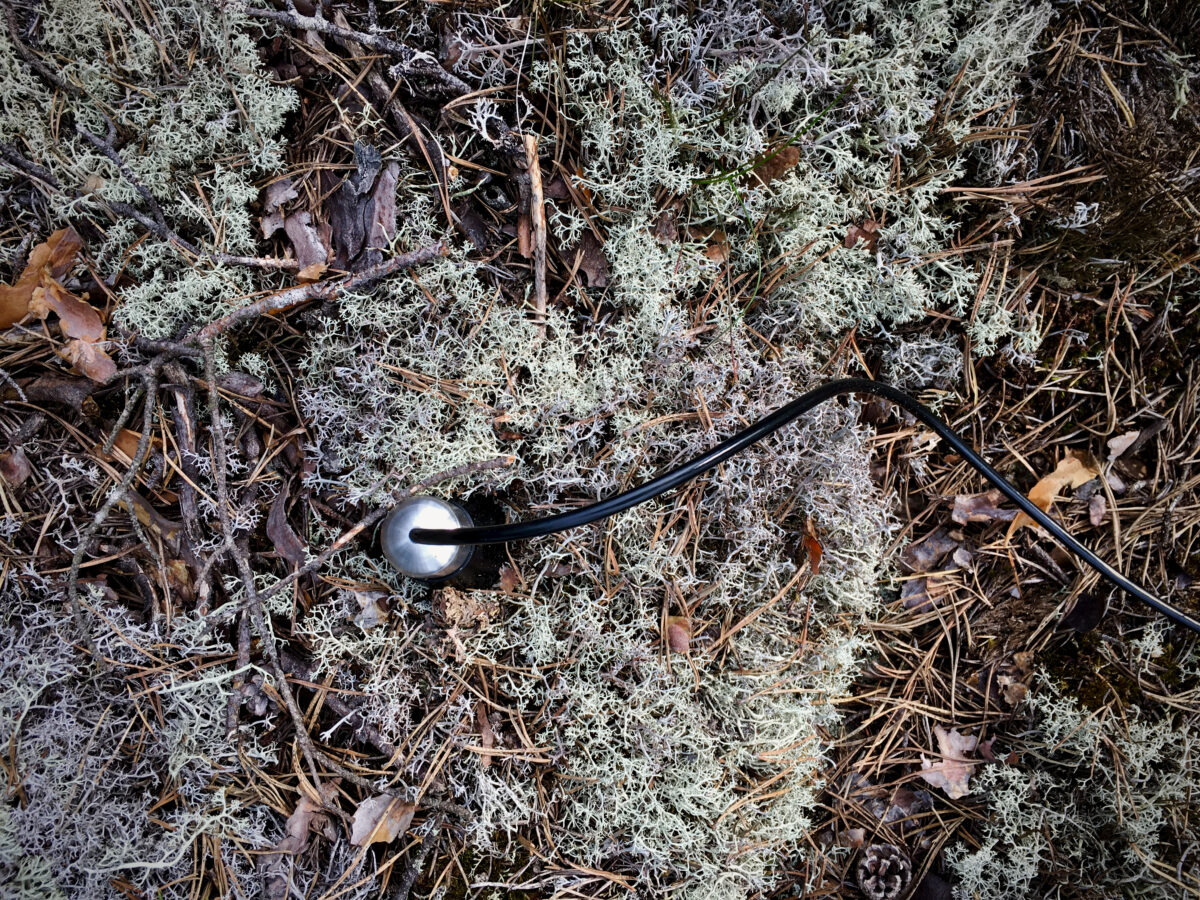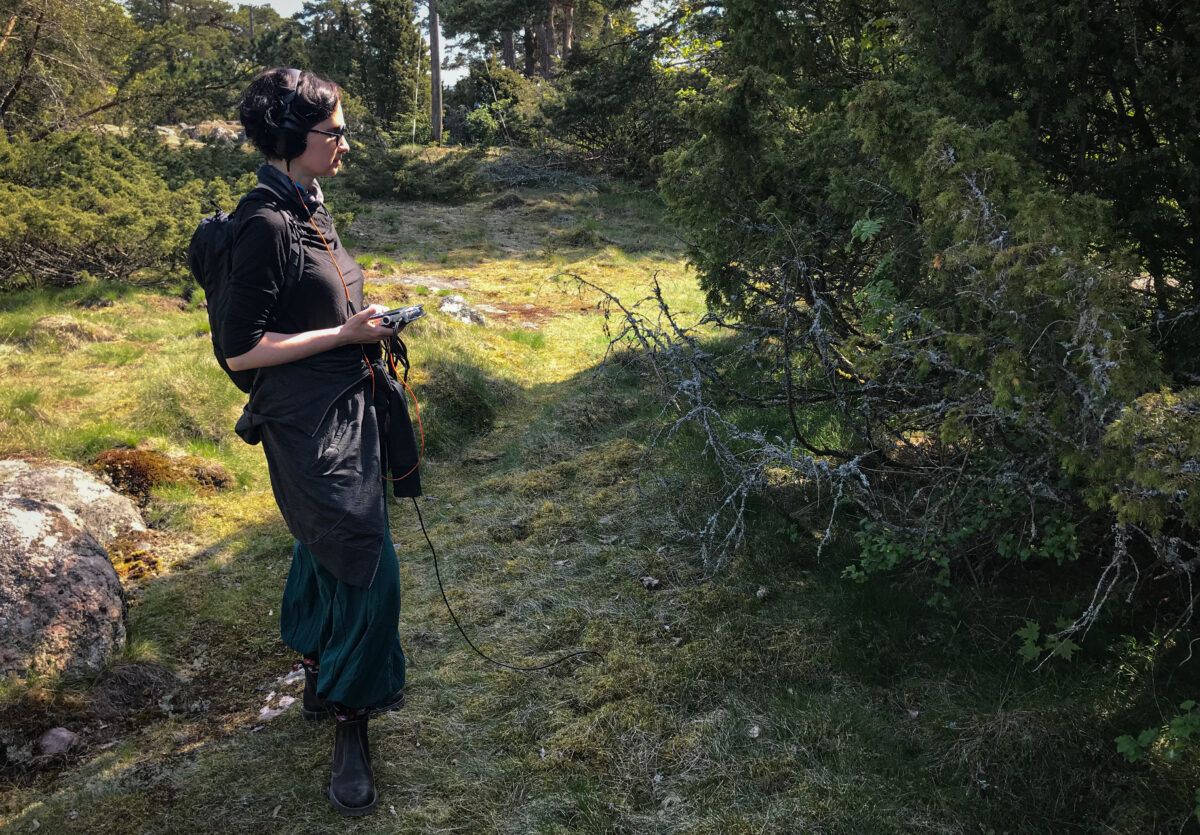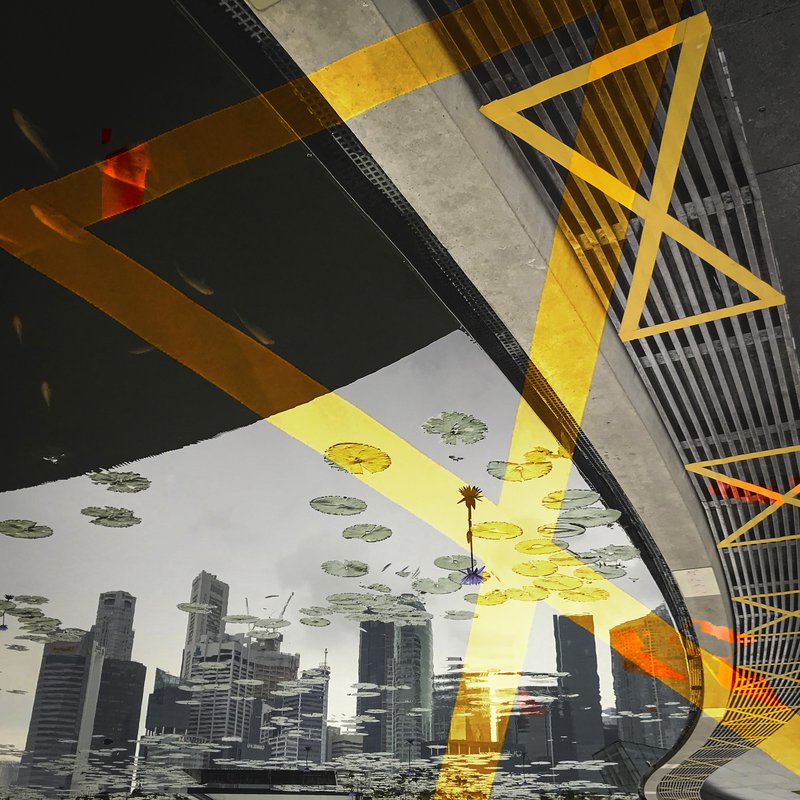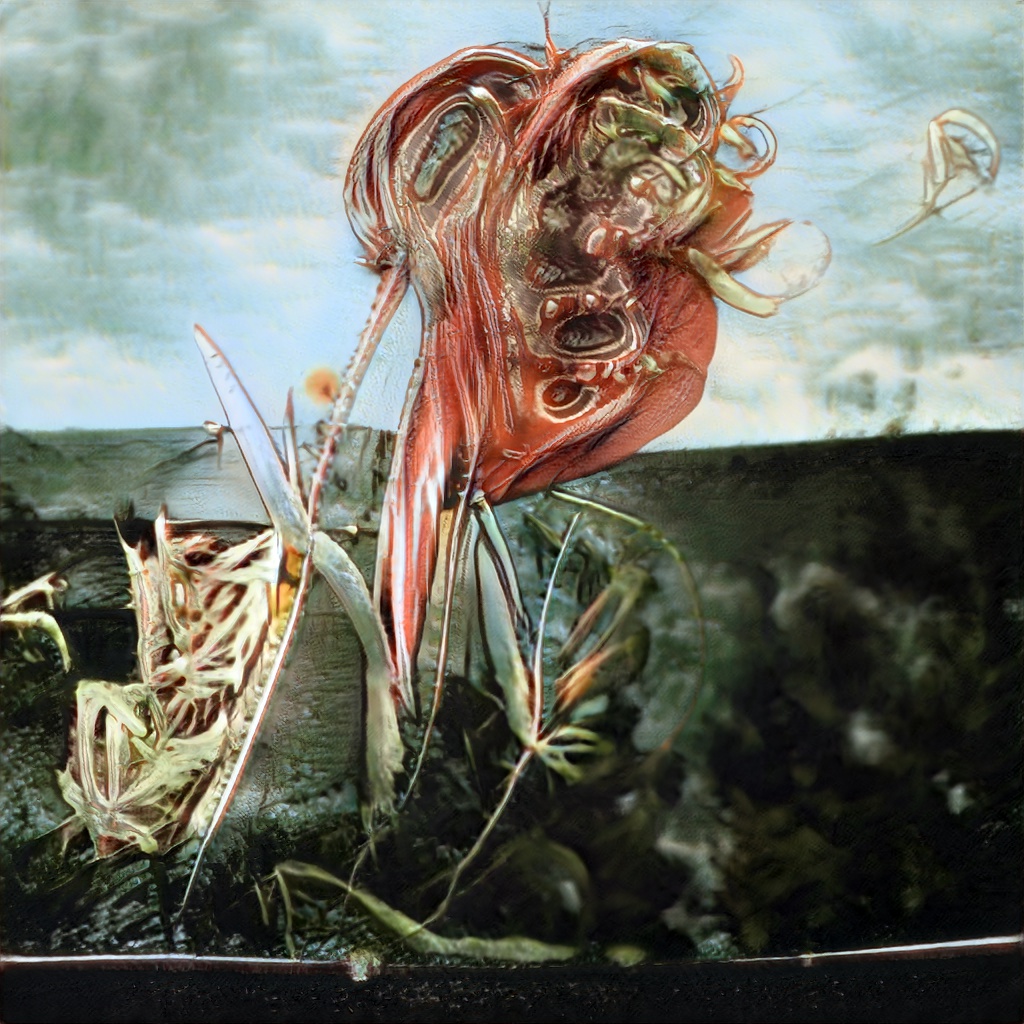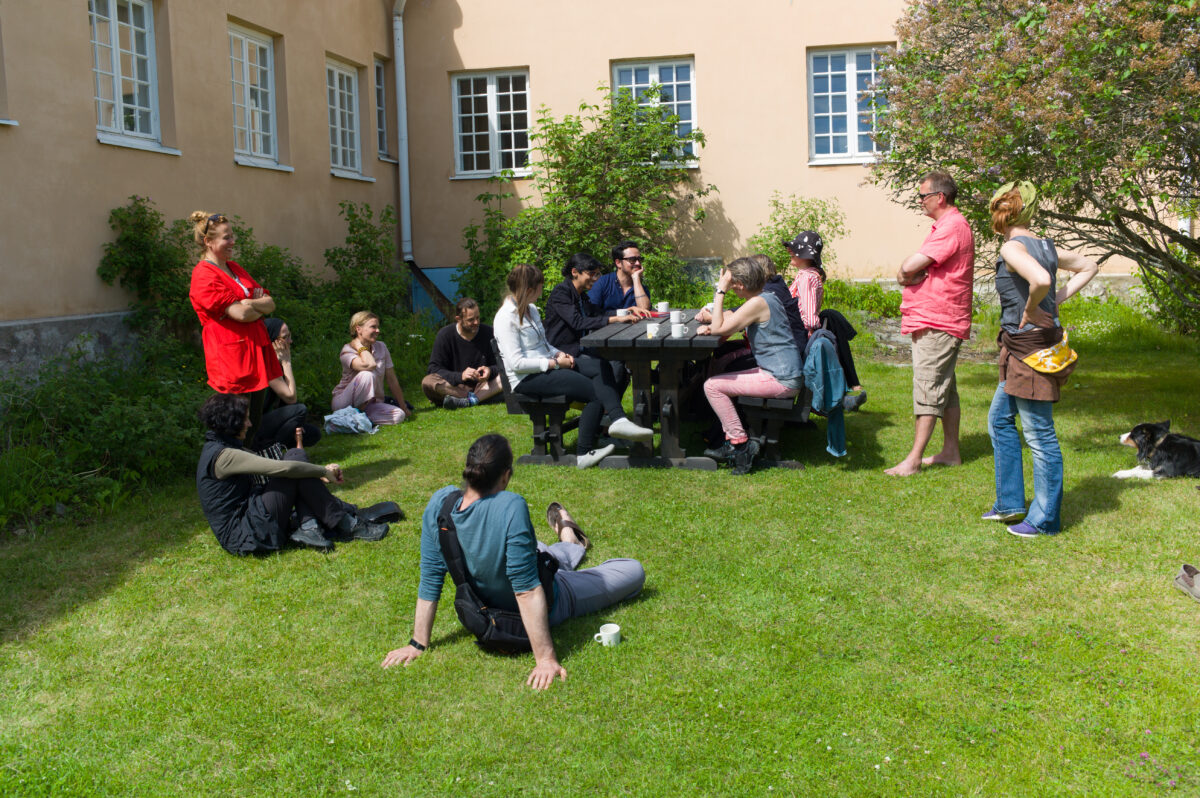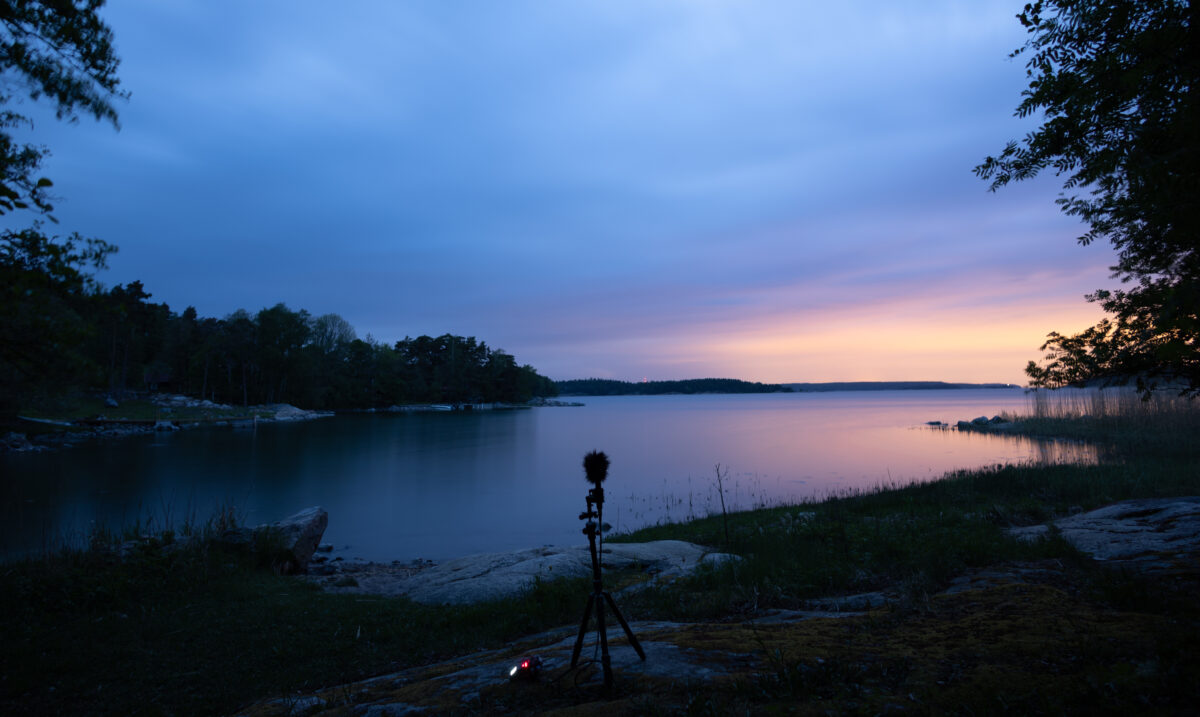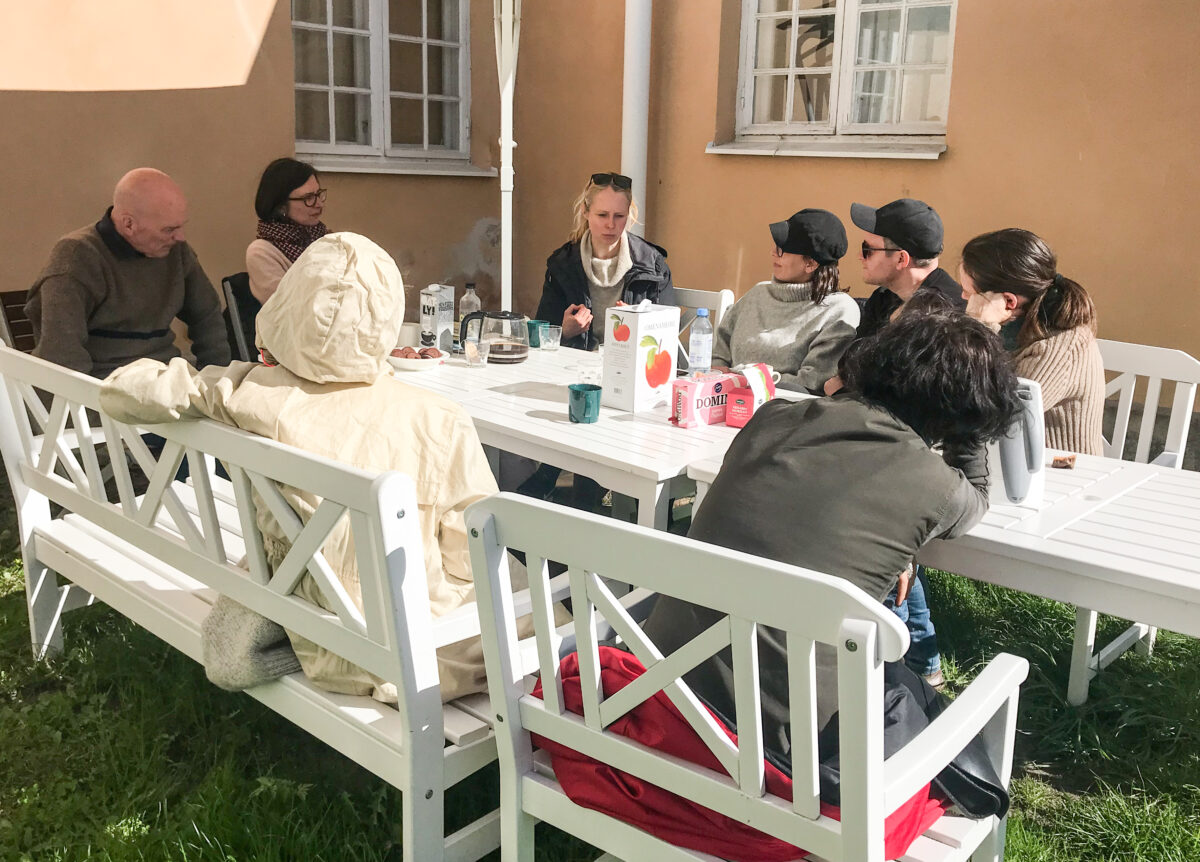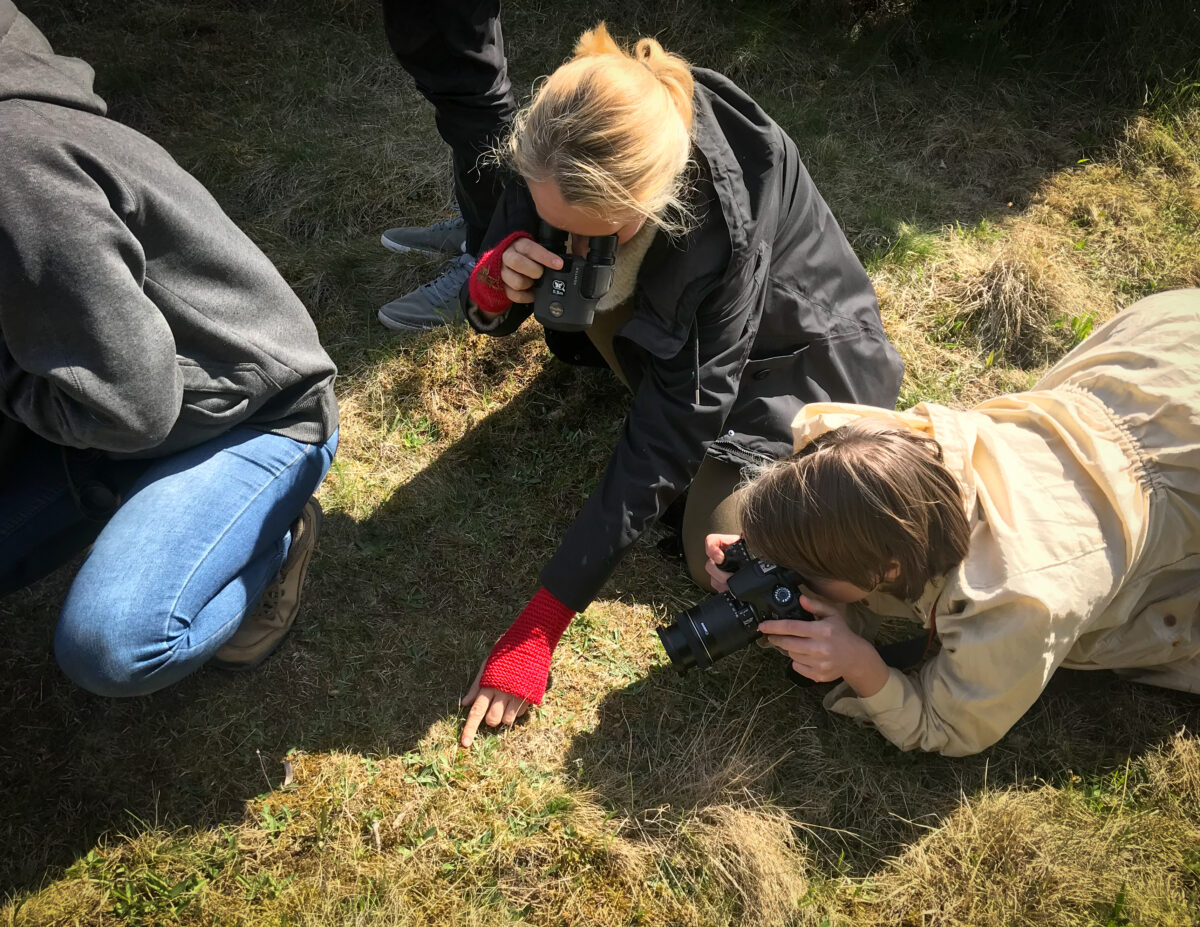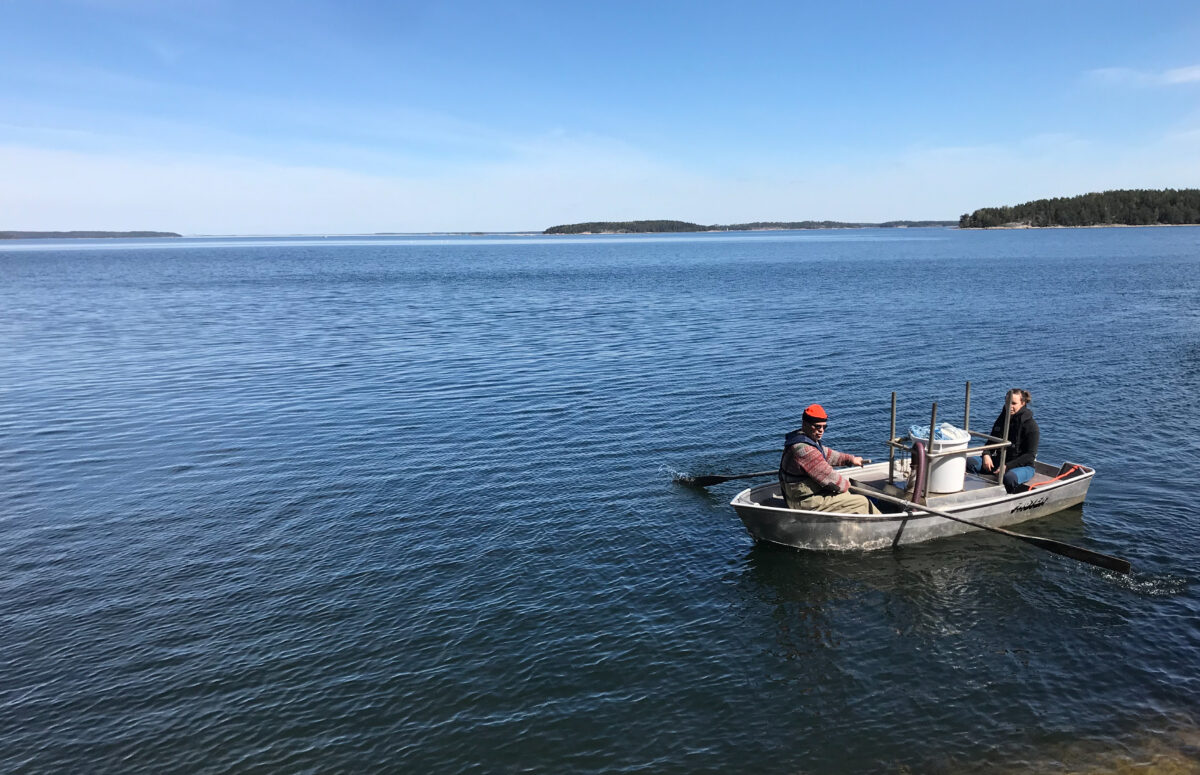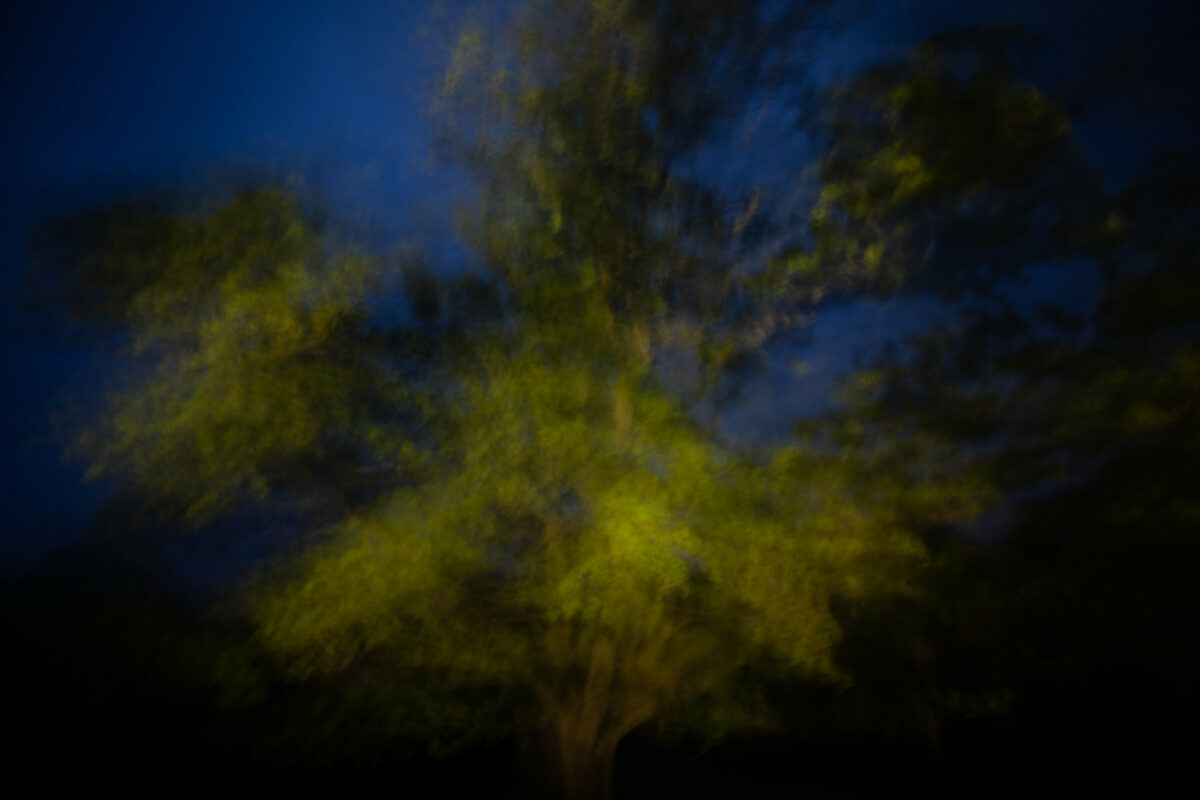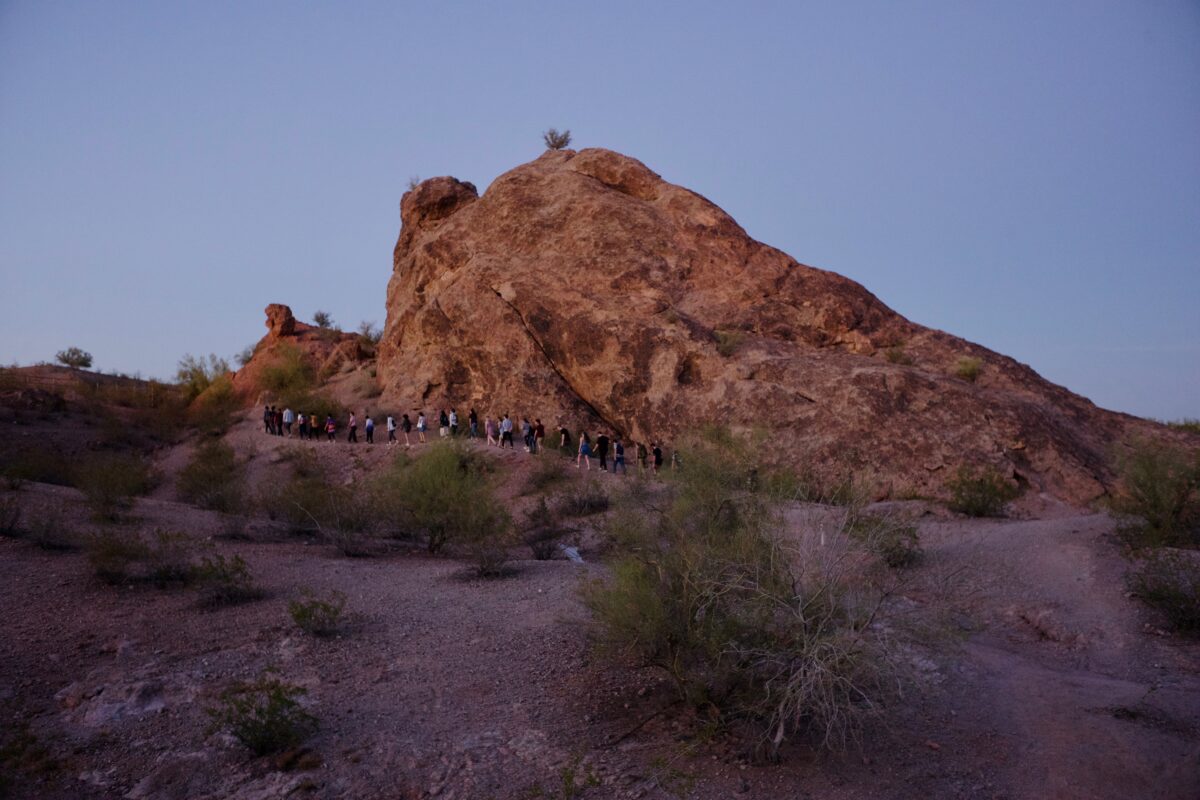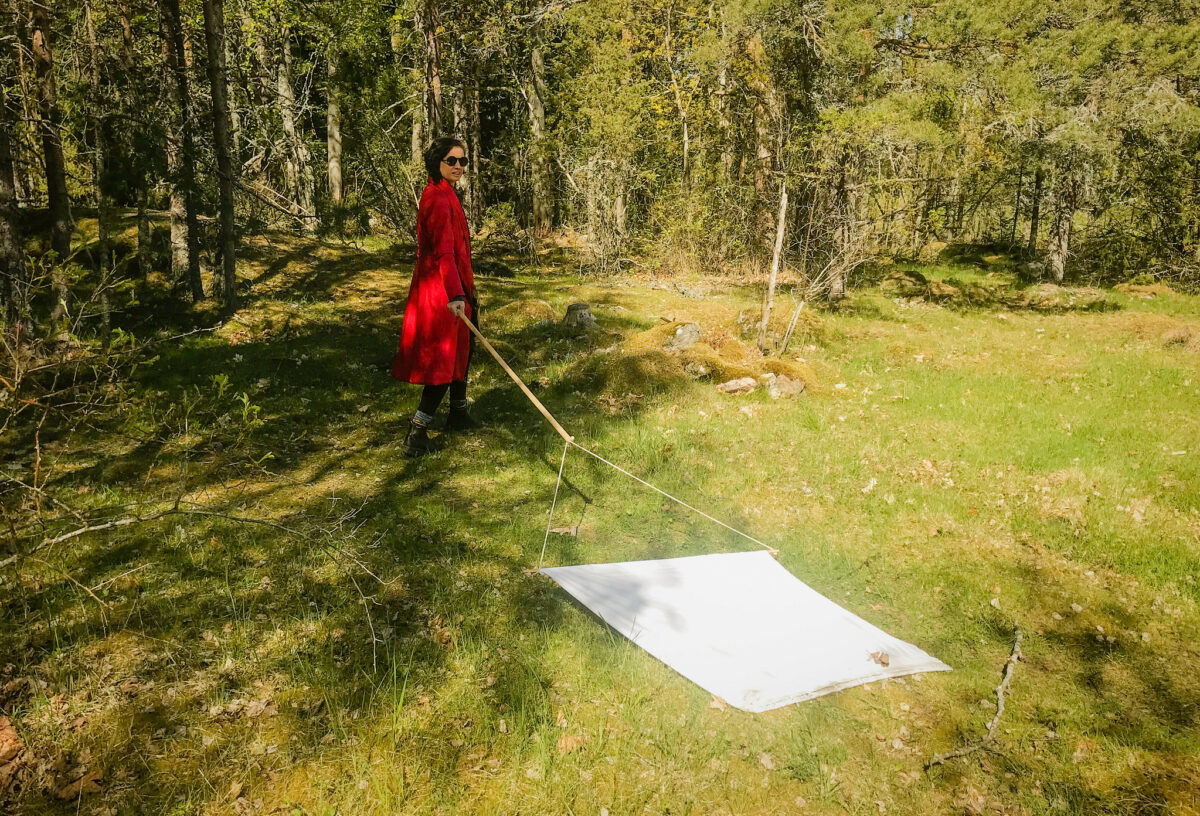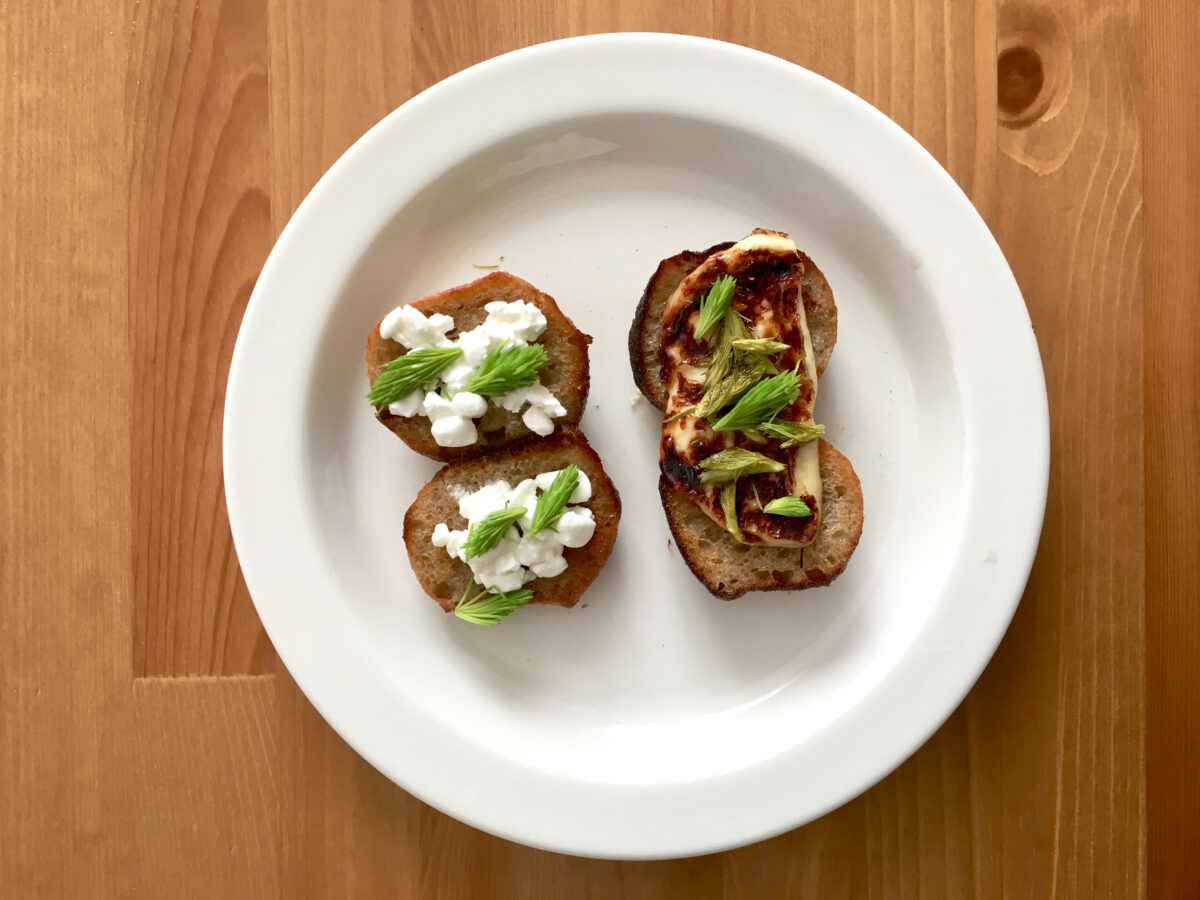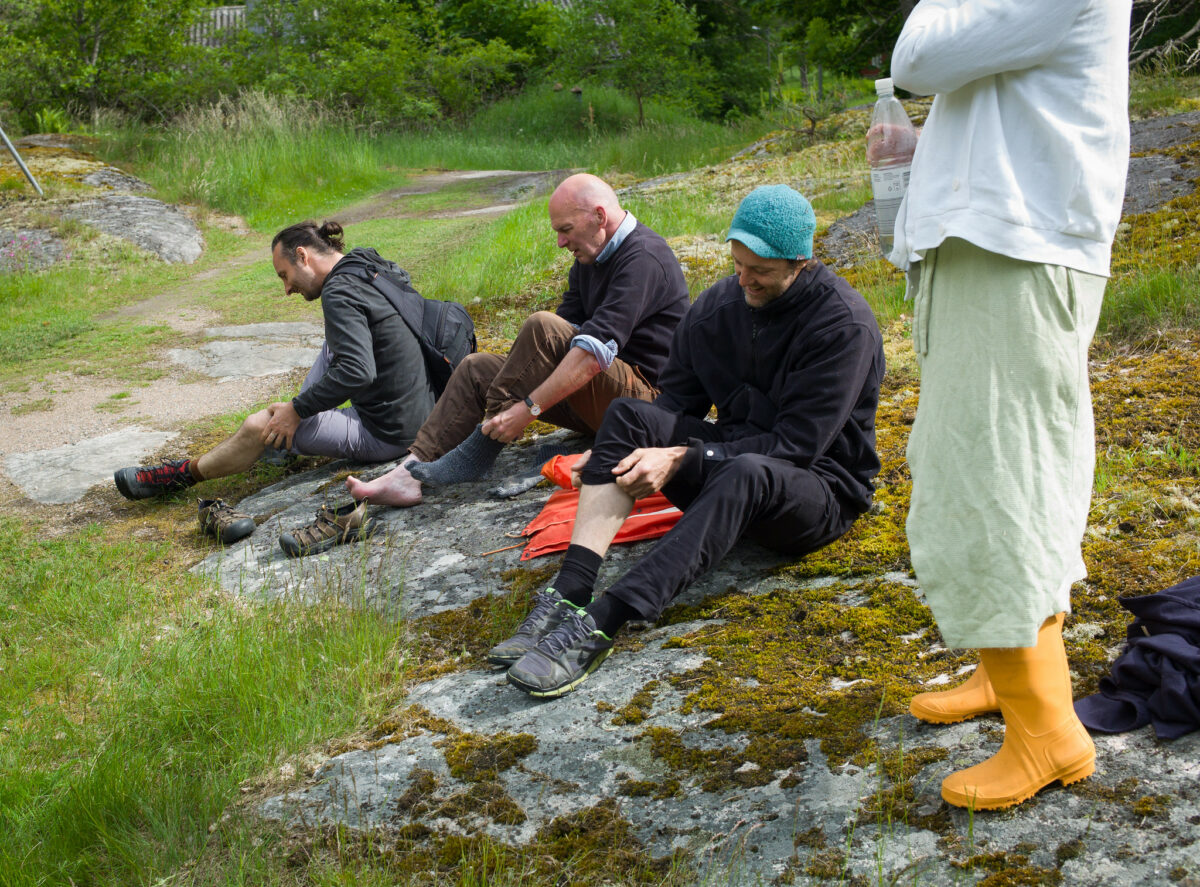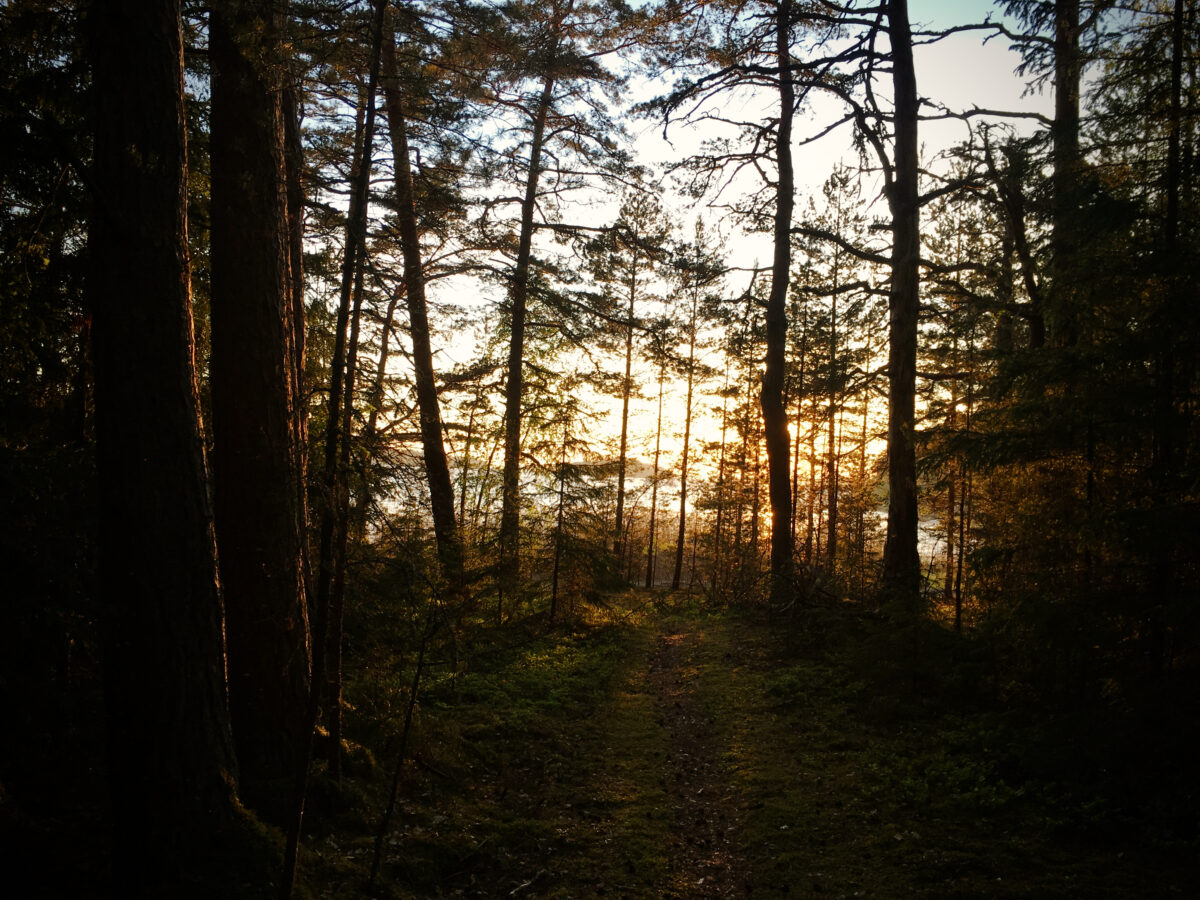Interview with transdisciplinary studio FoAM Earth
In 2017, shortly after founding FoAM Earth, Maja Kuzmanovic and Nik Gaffney travelled to Seili as part of the Spectres in Change pilot project. The initial retreat, shared with fellow artists and curators, sparked new relationships and conversations as well as an interest in returning to the island to actively engage with its gentle shifts and murmurings. In 2019, FoAM Earth participated in their second retreat in Seili, Spectres of Landings, this time combining their visit with a research residency. Kuzmanovic and Gaffney describe FoAM Earth as a nomadic studio within the FoAM network which explores futurecrafting as a way of re-enchanting the present. The studio creates propositions, immersive situations and experiences and cultivates kinship networks and circumstances for conviviality and collaboration.
Ahead of the How do you know what you know? Exercises in Attentiveness event on Friday 12th and Saturday 13th August – where FoAM Earth’s new sound walk, Post Glacial Rebound, will be premiered – Selina Oakes interviews Kuzmanovic and Gaffney to ask about the ways in which their extended engagements with Seili have filtered into the studio’s working practices and projects.
What have you been working on since your last visit to Seili?
FoAM: Our last visit to Seili was in May 2019. We had planned to return during 2020 and continue working on a site-specific soundwalk. Although these plans were interrupted by the pandemic, our conversations with the curators continued online and we gradually adapted our plans from situated to remote. During our residency on Seili, we compiled a motley collection of data, sound recordings, photos and videos, so we were able to continue working with the traces, sounds and fragments of the island without being there physically ourselves. Taru Elfving, Lotta Petronella and Kalle Hamm have shared new maps, sounds and images with us, and we are finding ways to adapt and work with more recent changes on the island.
Our current work and upcoming soundwalk, Post Glacial Rebound, is part of Resonances – a series of sonic propositions concerned with listening to the sounds of the Earth unfolding at different timescales and in different landscapes. Within Resonances, we collect, reflect and reshape the oscillations of earthbound entities to create soundscapes using field recordings and digital synthesis. Since our last visit to Seili, we have continued working with the Resonances series in two contrasting environments: the arid Sonoran and Mojave deserts in the USA, and the tropical urban jungle of Singapore. In Arizona, we produced the Dust & Shadow project which included a soundwalk and an immersive experience set in a library, while in Singapore, we recorded and composed soundscapes during the first “circuit-breaker” (to curb the spread of Covid-19) for listeners to experience, from wherever they happened to be situated, during lockdown. Some of these soundscapes are available via bandcamp.
Aside from Resonances, we have also been working on the Anarchive, a sprawling multi-sensory publication looking at FoAM’s multi-decade existence and focusing particularly on the ideas and practices which remain fertile and could offer hope amid the uncertainty of the near-now.
How has working in Seili and with CAA contributed to your artistic work in general?
FoAM: CAA’s ways of thinking about the arts, environment and climate change resonate closely with ours. The process-based and multi-year engagement with CAA, the Archipelago Research Institute and Seili has allowed us to deepen our relationship with the place and people involved. This influences our artistic work, both on the island and more broadly. Through our experiences on Seili, we met several kindred spirits and found many opportunities through which to learn and share. In our Spectres in Change fieldnotes (fieldnotes #1 and fieldnotes #2), we wrote about how the project’s focus on different practices of landing and attentiveness encouraged us to reflect on how we approach new places and unfamiliar contexts when working nomadically. Working on Seili gave us an opportunity to further develop our capacities to listen and observe, sense and attune, and share stories and experiences.
We have been inspired both by the history and ecology of the island, and the people involved – the CAA curators, the artists and scientists on Seili. We appreciate the experimental process and long-term engagement encouraged by the project, as well as the artful combination of reflective retreats and informal socialising. Spending more time on the island during our residency in 2019 allowed us to experience it’s more-than-human qualities. The residency inspired a more intimate connection with the landscape and its inhabitants, which we found essential to deepen our work on and around Seili.
How can art and science converse on the topic of climate change? What kind of new layers has working in Seili brought to the conversation?
FoAM: Both art and science can provide different, yet complementary approaches to how we understand, respond to, and live with climate change. Conversations grounded in shared concerns can develop in ways that may be impossible otherwise. The physical science of climate change is well understood and the IPCC Assessment Reports are substantial contributions to human understanding. However, impacts, adaptation and mitigation are complex, difficult issues that demand creativity and social engagement as much as policy changes and data collection.
Artists and scientists share a curiosity about the world, even if their methods and techniques may sometimes differ. With a broad, respectful engagement, different approaches can have reciprocal benefits, whether climate change is seen as a subject, a situation, or an emergency. Conversations and collaborations can lead to deeper understanding and more viable action.
Our visits to Seili enabled us to immerse ourselves in work and life at the Archipelago Research Institute, to converse with scientists in lecture halls, in the field, during lunch, sauna or evening drinks. Spending time together with the scientists in their ‘habitat’ offered insights into their research questions, methodologies and results. The close connections between the researchers, the archipelago and its inhabitants (human, vegetal, animal…) have added more situated, personal layers to the conversation. The many layers of history and geology co-existing on the island have contributed to the depth and breadth of these conversations.
You mentioned that experimental processes and long-term engagements inspire you. Could you tell more about how this shows in your working methods?
FoAM: Most of FoAM’s work finds some grounding in experimental processes. This could include elements such as questioning the status quo, learning from different stakeholders, articulating hypotheses, designing artworks as public experiments, reflecting on the creative process and sharing results using open (re)source principles. These aspects vary depending on the people involved and what the situation calls for, and the content, formats and outcomes can also take on many forms. Often we begin with a small experiment, or hypothesis, or inkling, which develops as a project through iterations. This kind of work benefits from long term engagement of everyone involved. Unexpected results can take things in unexpected directions. Some examples of our process-based work include Dust and Shadow, Tasting Tomorrow, or Marine CoLab.
We are approaching our work on Seili in a similar manner. The first visit was something like an initiation — getting to know the environment, people and other entities involved. We documented this process in photographs and text. The second visit was more concentrated: we began attuning to the place through listening, recording, exploring alongside talking with the researchers on the island and following their experiments. We collected time series data, sound and visual material to work with, and documented the process on our blog, website and wiki. The next cycle includes sound composition, working with the sonification of time series data, and developing a soundwalk on the island.
In the longer term, we’ve discussed finding possible answers to the question “what could climate change in the archipelago taste like?” through creating an experimental meal. We’ve talked about how artistic and scientific work can provide insight into ongoing research, or take it in new directions. But, as with any speculative, or long-term processes, these plans will change shape through further engagements with the people involved, the island and its (spectral) inhabitants.
Due to Covid-19-related delays, there has been a pause in your on-site engagement with Seili. How have your plans for the island changed over the course of a few years, and what has this ‘break’ afforded you?
FoAM: The ‘great pause’ of the pandemic enabled us to deepen our relationship with CAA and Seili remotely. It also afforded us some distance from the island itself, which has been helpful to put the project in a wider context of accelerated climate change and the tangible threat of ongoing pandemics. Experiencing the global effects of the SARS-CoV-2 virus and the multitude of responses has increased our appreciation of the Archipelago Research Institute’s longterm research on ticks and the spread of tick-born diseases.
Instead of continuing with the situated research trips – planned at various intervals between 2017-2022 – we have been working with the materials collected on the island in 2019. We noticed that we are paying more attention to the recorded materials on both their own terms and in terms of relating them to the changing contexts around Seili. The work is becoming more of a prefiguration, or a yearning, maybe even an homage to a place that we care about but where we could not return.
However, working on a site-specific soundwalk without being on-site of course poses some challenges. We were unable to experience how the island has changed with the rise of tourism in recent years. The route we mapped for the soundwalk will look and sound different. The ideas we had three years ago still feel just as resonant, but their implementation has needed some simplification to allow us to create the work remotely.
Being physically away from the island and the people hasn’t affected our motivation to continue with the engagement. The conversations with CAA and finding different opportunities for collaboration has strengthened our commitment to an ongoing relationship, despite the spatial and temporal distance. In a way, living through the ebbs-and-flows of the pandemic, while keeping the remote connection alive, has caused the relational distance to shrink.
Read more about FoAM Earth’s Spectres in Change activities: https://fo.am/activities/spectres-in-change/
